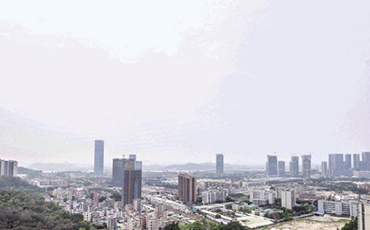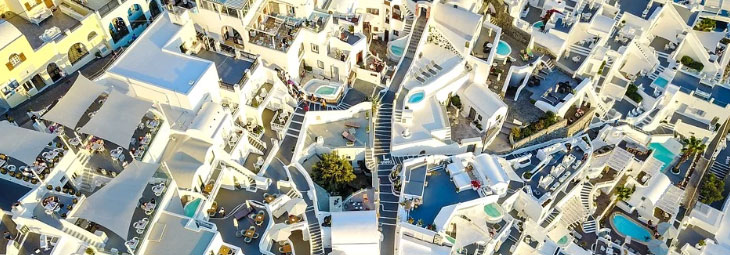


Recently, the General Office of the Central Committee of the Communist Party of China and the General Office of the State Council issued the "Opinions on Continuously Promoting Urban Renewal Actions" (hereinafter referred to as the "Opinions"), which put forward eight main tasks to promote the optimization of urban structure, improvement of urban functions, continuation of urban cultural heritage, and enhancement of urban quality, and to build livable, resilient and smart cities.
In related fields, Guangdong has carried out a series of explorations. Among the 41 typical cases of national urban renewal released by the Ministry of Housing and Urban-Rural Development recently, four projects from Guangdong were selected, covering four major tasks. In the two batches of typical cases, a total of seven cases from Guangdong were selected, ranking among the top in the country.
A relevant official from the Department of Housing and Urban-Rural Development of Guangdong Province introduced that as a pioneer in the transformation and upgrading of existing construction spaces, Guangdong will continue to innovate sustainable urban renewal models and promote high-quality urban development.
First, raise funds for urban renewal through multiple channels; second, assist in the rejuvenation of old urban areas and streets in multiple fields.
The renovation, renewal, and transformation of old residential areas, old streets, and old industrial zones, as well as the improvement of urban infrastructure, are key tasks emphasized in the "Opinions". In the central urban area of Shantou, the municipal state-owned enterprise directly supplies water to 420,000 households. Due to insufficient municipal water pressure and the lack of centralized pressure-increasing facilities in some old residential areas, users living on the fifth floor or above have to install "small water pumps" to increase water pressure, which adds to the economic burden of residents and causes problems such as aging pumps, noise disturbance, and safety hazards like private wiring.
Since 2021, Shantou has actively responded to the demands of residents for improved water pressure and carried out the pressure-increasing renovation of the municipal water supply system in the central urban area and the standardized rectification of the water pipes after the water meters. Through the renovation of some municipal water supply trunk lines and community pipelines and the construction of community pump rooms, the water pressure in old residential areas has been improved, benefiting 290,000 households in the central urban area.
The government's leading role and the voluntary participation of residents have made this renovation project a highlight, and it was eventually included in the second batch of national urban renewal typical cases (urban infrastructure renovation category) along with urban renewal projects in Chongqing, Shanghai, and Hangzhou.
Establishing a construction, operation, and governance mechanism suitable for urban renewal is one of the important requirements proposed in the "Opinions". In this regard, Guangdong has explored a new model of urban renewal operation and management that integrates asset operation, public resource operation, and community public services, and has formed a long-term and sustainable mechanism.
During the renovation of the Women and Children's Building in Shenzhen, the application of the PPP model enabled the advantages of the government, the market, and other parties to be fully utilized, introducing social capital and rationally planning the functional zoning and core business boundaries of the project. By the end of last year, the overall opening rate of the building reached 88%, and multiple commercial projects had achieved positive cash flow, providing high-quality women and children's public services at a lower cost and higher efficiency.
In addition, Guangdong has innovatively established a multi-channel urban renewal fund-raising mechanism in practice, where residents contribute a little, property units raise a little, the government subsidizes a little, and enterprises invest a little. It has also piloted the demolition and reconstruction of multi-property owner dilapidated houses,
promoting significant changes through small-scale initiatives.
A relevant official from the Department of Housing and Urban-Rural Development of Guangdong Province introduced that the department has jointly issued policy documents with the Guangdong Branch of the National Development Bank and the Guangdong Branch of China Telecom, and established a cooperation platform to encourage multiple entities such as financial institutions, state-owned enterprise platforms, and social forces to actively participate in urban renewal and transformation, and implement the various guarantee measures proposed in the "Opinions".
II. Synergistic Protection of History and Nature; Continuity of Cultural Heritage and Optimization of Ecology
In recent years, Guangdong has integrated the protection and inheritance of historical culture throughout the entire process of urban renewal, guiding the coordinated advancement of historical and cultural preservation and urban renewal. By enhancing the revitalization and utilization of historical and cultural resources and promoting cultural and tourism integration, it has effectively improved the living environment, maintained the cultural heritage of cities, and achieved multi-dimensional benefits while protecting cultural heritage.
In Liwan District, Guangzhou, 5% of the land transfer fees are allocated as funds for historical and cultural conservation. This has enabled the meticulous micro-renovation of the Enning Road Historical and Cultural Block, preserving the charm of the old Xiguan area while catering to the preferences of young people. This project also introduced social enterprises through the BOT model to participate in investment, construction, and operation. As a result, the first phase of Yongqingfang generated an economic output of approximately 5 billion yuan with an investment of about 1 billion yuan. The renovation has also increased the value of surrounding properties by over 120 million yuan, making it one of the second batch of national urban renewal model cases.
In other parts of the province, stories of century-old villages undergoing rejuvenation and transformation continue to unfold. After its renovation, Nantou Ancient Town in Shenzhen has created a series of cultural event brands, attracting 13 million visitors annually. Beishan Village in Zhuhai, a century-old village, has transformed into an "international village", with villagers' rental income increasing by up to five times. After its transformation into a popular tourist destination, Chikan Ancient Town in Jiangmen generated 2.254 billion yuan in tourism revenue in 2024.
It is worth noting that the "Opinions" not only make specific requirements for the protection and inheritance of historical culture but also include the restoration of the urban ecosystem as one of the eight main tasks. It proposes to promote the construction of sponge cities and protect and restore urban wetlands, among other measures.
Among the second batch of national urban renewal model cases, the Haizhu Wetland in Guangzhou stands out. Through high-quality protection and development of its natural ecology, it has driven the overall value of the surrounding area. Previously, despite being known as the "Green Heart of Guangzhou", the Haizhu Wetland, with its highly concentrated ecological, cultural, spatial, and industrial development values, was unable to fully release its comprehensive benefits due to the encirclement of old villages and factories.
Since 2019, Haizhu District has implemented the renewal and transformation of 11 square kilometers of wetland and 23 square kilometers of surrounding areas in a coordinated manner. It has focused on addressing the relationships between "ecology and value, protection and development, local and overall, control and construction", further improving the ecological functions of the Haizhu Wetland and significantly increasing the biodiversity of fish, insects, and birds. This has driven the overall value of the surrounding area.
Behind the systematic preservation of natural and cultural resources, a comprehensive and multi-level urban renewal institutional framework has been formed in Guangdong, with the leading role of provincial departments fully exerted. Currently, Guangdong has issued provincial policy documents in areas such as urban health checks, renovation of old urban residential areas, renovation of urban villages, and protection and inheritance of historical culture. It has also promulgated local regulations for the protection of historical and cultural cities, towns, and villages, and was the first in the country to complete the full coverage of urban health checks in cities at or above the prefectural level.
Source: Southern Daily, Southern+ App, Reporter: Shao Yihong.
https://news.southcn.com/node_35b24e100d/294d7e0fa9.shtml
Translated & Edited by Jin He